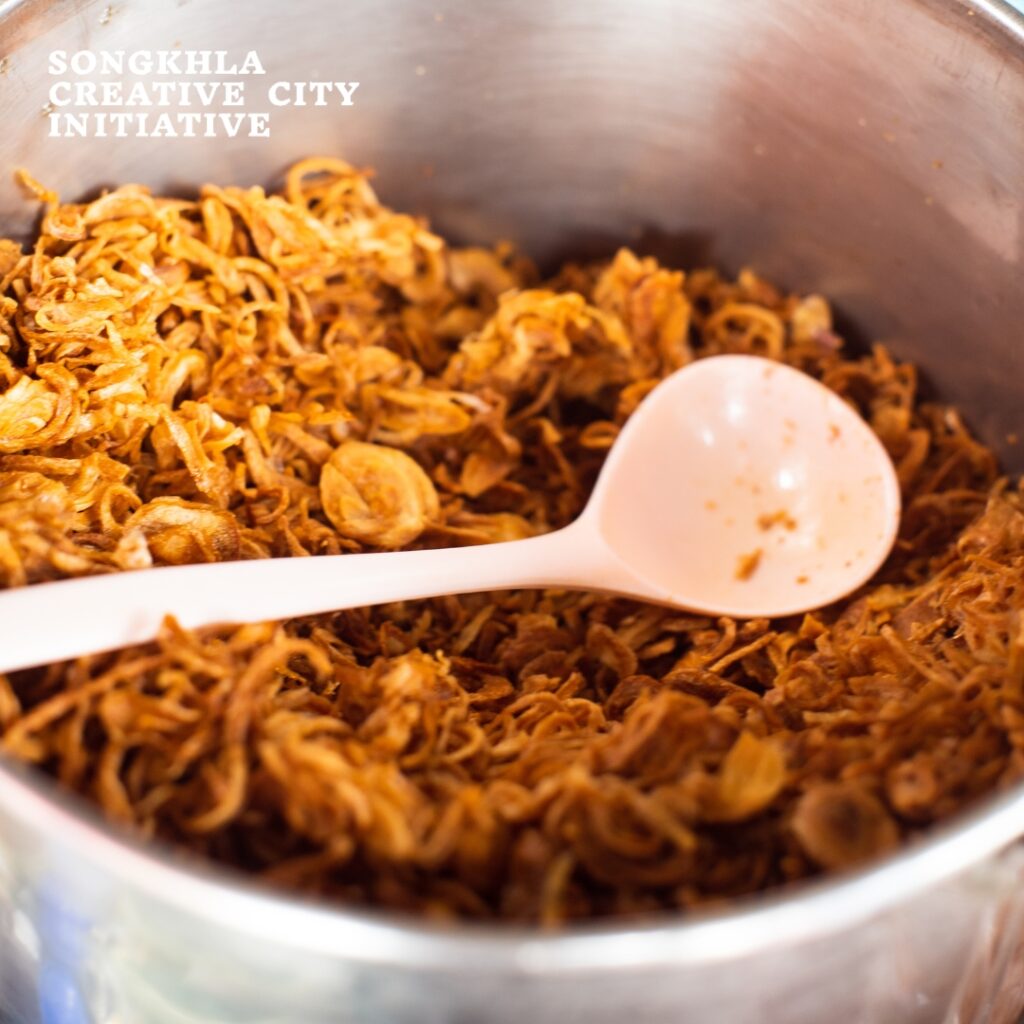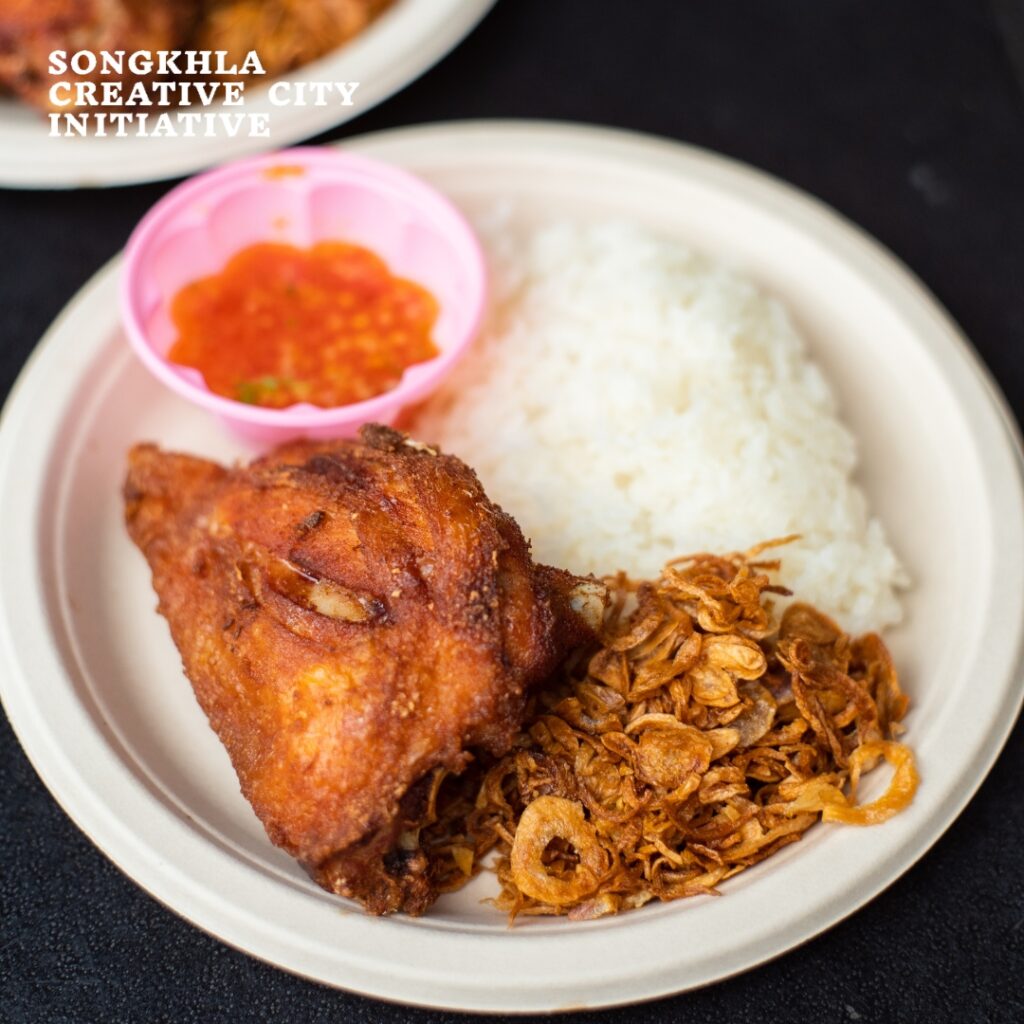It now seems that “Hat Yai Fried Chicken” restaurants have spread to every region throughout Thailand, having created economic value and established a reputation in southern districts in the past. However, to experience the authentic taste of Hat Yai fried chicken, one must visit Hat Yai District in Songkhla Province, where local people call the same dish, in the authentic southern style, “Niyw Kai or Sticky rice and Fried Chicken”.

Back in the original era, Hat Yai fried chicken was sold as street food by vendors at Hat Yai Junction Train Station. They focused on easy-to-eat, filling, no-mess food. The chicken was mixed with red spices and dry-fried, then served with sticky rice wrapped in banana leaves, with no dipping sauce. In later eras, vendors developed from train station stalls to pushcarts, as well as dedicated shops around Hat Yai Clock Tower, where was situated a plaza, a night market, and an important bus connection point. From that time, the recipe of Hat Yai fried chicken began to change.
Carts lined up, stoves, iron pans, large strainers, and mouth-watering aromas – a true civilized street food for the modern era. The custom of eating “Niyw Kai” has also changed. It need not be eaten only on journeys, but can be eaten all day as breakfast, lunch, dinner, or a late-night meal. It is also enjoyed at festivals by people of all ages.

The characteristics of an authentic “sticky rice and Hat Yai fried chicken” include: the sticky rice must be hot with a soft and chewy texture; the chicken must be marinated until rich and fragrant with spices, then fried in oil until the meat is soft, juicy, and melts in the mouth; the chicken skin must be thin and crispy; shallots must be sliced thin and fried until golden brown and crunchy; dipping sauce must be thick, viscous, with a slightly spicy, sweet and sour flavor.

In Hat Yai alone, there are hundreds of “Niyw Kai” vendors, including food carts, stalls and restaurants. However, the recipe for this dish is variable, with each shop possessing its own unique secret methods to win-over customers, such as Waneeta Fried Chicken, Wasim Fried Chicken, Decha Fried Chicken, Sofeeya Fried Chicken, Bang Jen Fried Chicken, and Pi Pla Fried Chicken, among numerous others.
Ma Sao – Mrs. Asirae Donraman, owner of Sofeeya Fried Chicken, Hat Yai branch, a famous restaurant on the banks of Saeng Thong School Canal, says that she used to sell at Rado Intersection before moving to her current location. She received the recipe from her aunt and so named the restaurant in honor of the recipe’s originator. The unique feature of the restaurant is that everything is homemade. No ready-made products are used. The marinade for the chicken is made entirely with such ingredients. Frying the chicken requires considerable skill to control the heat. The fried shallots and dipping sauce, also important elements, are prepared with the same attention and care.

“Currently, both regular customers, customers from Bangkok and other provinces, and foreign tourists support us in large numbers. Daily sales require 50 kilograms of sticky rice and 170 kilograms of chicken, and we sell out in just 5 hours” – Ma Sao.